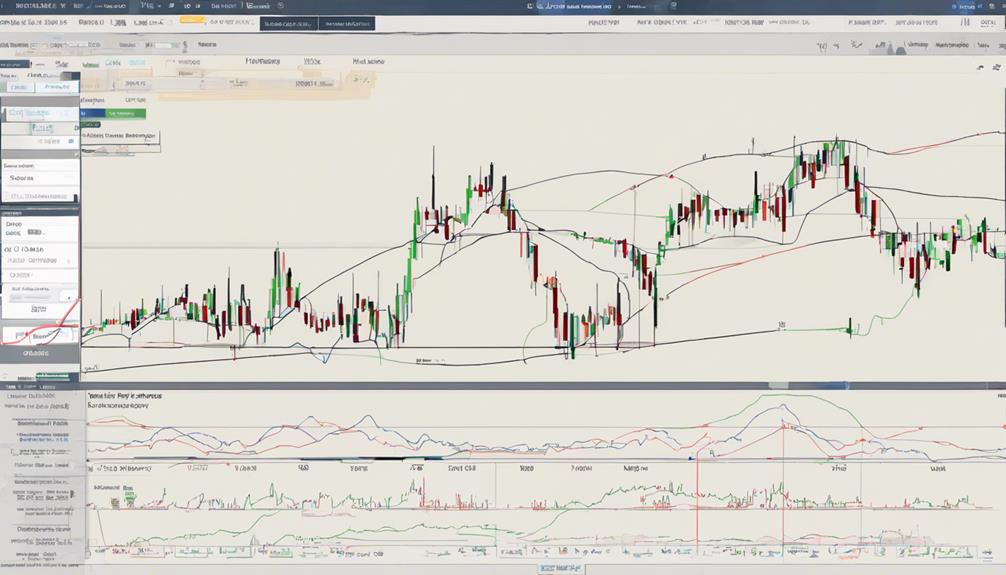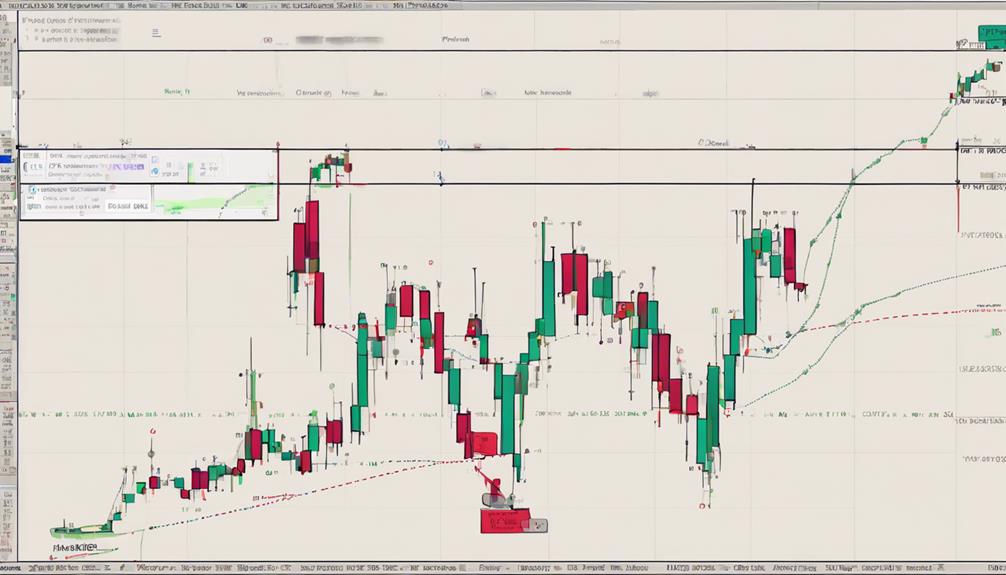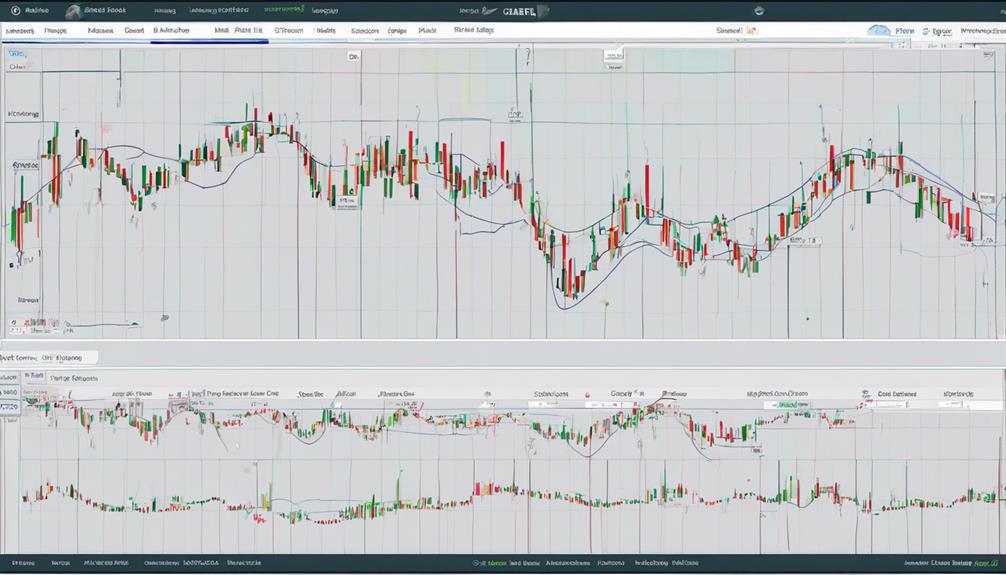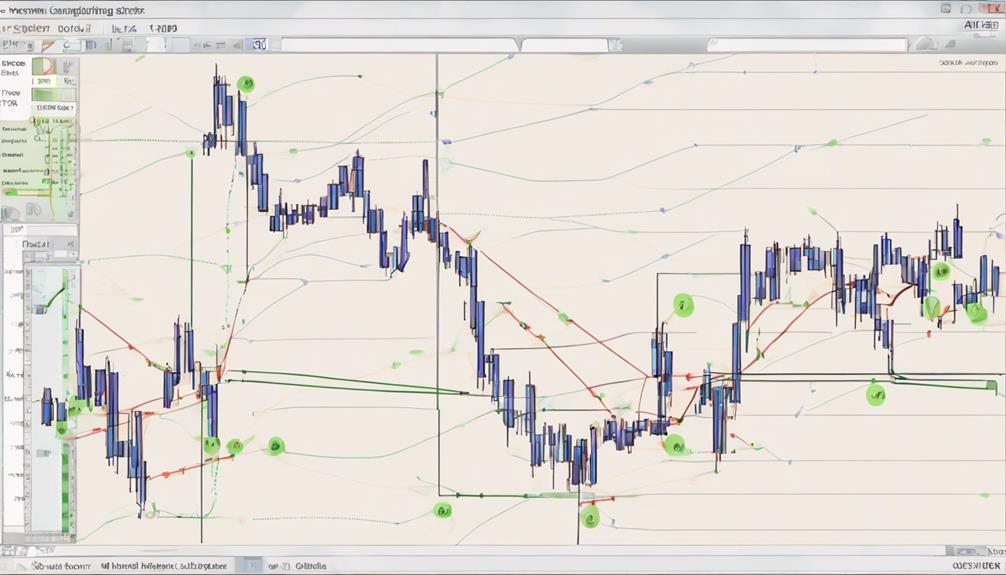When it comes to navigating the complexities of trading, understanding the significance of moving averages is key. These seemingly simple indicators hold the power to uncover hidden patterns and provide valuable insights into market behavior.
By incorporating moving averages into your trading strategy, you can gain a deeper understanding of price trends and potential entry or exit points. But why exactly are moving averages so crucial in the world of trading?
Let's explore the underlying reasons that make them indispensable tools for traders looking to enhance their decision-making process.
Role of Moving Averages in Trading
When actively trading, understanding the pivotal role that moving averages play can significantly enhance your decision-making process. Moving averages act as dynamic support and resistance levels, guiding traders in identifying potential buy and sell signals. By smoothing out price fluctuations over time, these averages help confirm trend directions and signal possible trend reversals in the market.
Different types of moving averages, such as Simple Moving Averages (SMAs) and Exponential Moving Averages (EMAs), offer varying levels of responsiveness to price changes, allowing traders to adapt their strategies accordingly. These tools are indispensable for technical analysis in stock trading, providing valuable insights into price movements and aiding in making informed trading decisions.
Significance of Moving Averages for Traders

Moving averages serve as essential tools for traders, offering valuable insights into trend identification and potential entry and exit points based on price fluctuations over specific periods. Traders rely on moving averages to determine support and resistance levels dynamically, assisting in decision-making processes.
By filtering out noise in price data, moving averages help traders focus on significant price movements crucial for making informed trading choices. The crossover of different moving averages is particularly significant as it provides buy or sell signals, indicating potential shifts in trend direction.
Whether you're a novice or experienced trader, understanding the significance of moving averages can enhance your ability to navigate the markets effectively and capitalize on opportunities presented by evolving trends.
Impact of Moving Averages on Market Analysis

Analyzing market trends through the lens of moving averages provides traders with a strategic advantage in understanding price dynamics and potential trading opportunities. Moving averages act as key tools in technical analysis, helping traders identify trends, support and resistance levels, and optimal entry and exit points for trades.
By smoothing out price fluctuations, moving averages offer insights into price momentum and potential reversals in the market. Traders can assess the strength and direction of a trend by comparing different moving averages. Understanding how moving averages interact with each other enables traders to make informed decisions and enhance their trading strategies.
In essence, incorporating moving averages into market analysis enhances traders' abilities to navigate the complexities of the financial markets effectively.
Why Moving Averages Are Essential in Trading

Incorporating moving averages into your trading strategy is essential for gaining a deeper understanding of market trends and making informed decisions. Moving averages, such as Simple Moving Average (SMA) and Exponential Moving Average (EMA), play a critical role in technical analysis by smoothing out price data to identify trend directions accurately. They help traders recognize support and resistance levels, confirm trend movements, and generate buy/sell signals based on price crossovers.
How Do Moving Averages Impact Trading Strategies?
Moving averages play a crucial role in trading by smoothing out price fluctuations over a specific period. Traders use moving averages to identify trends and potential entry/exit points. The 50-day and 200-day moving averages are commonly used to determine market direction and support/resistance levels. Understanding the role of moving averages in trading is essential for developing effective strategies.
Benefits of Incorporating Moving Averages

Utilizing moving averages in trading enhances trend analysis and decision-making by providing a smoothed representation of price data over specific time frames. By incorporating simple moving averages (SMAs) or exponential moving averages (EMAs), traders can efficiently identify trends, potential buy/sell signals, and support/resistance levels. These moving averages offer valuable insights into trend directions and market sentiment.
Analyzing crossovers between different moving averages can further assist in understanding market dynamics and spotting trading opportunities. The visual clarity provided by moving averages aids in confirming trend movements and making informed trading decisions.
Including moving averages in your technical analysis toolkit can significantly improve your ability to navigate the market with confidence.
How Do Moving Averages Impact Trading Strategies?
Moving averages play a crucial role in trading by helping traders identify trends and predict potential price movements. By smoothing out price fluctuations, they provide valuable insights into market direction and help traders make more informed decisions. The role of moving averages in trading cannot be underestimated, as they are widely used in various trading strategies.
Frequently Asked Questions
Why Is Moving Average Important in Trading?
In trading, moving averages are crucial for smoothing price fluctuations, confirming trends, and setting entry/exit points. They help filter out market noise, signal potential trends, and assist in making informed decisions for trading success.
What Is the Most Important Moving Average in Trading?
When trading, focus on the 200-day moving average as it's crucial for spotting long-term trends. Investors and traders heavily rely on this indicator to gauge market sentiment. Crossovers with the 200-day moving average signal significant trend changes.
What Are the Advantages of Moving Average Method?
When trading, using moving averages gives you an edge by highlighting trends and potential buy/sell signals. They smooth out price data, making it easier to spot market sentiments and momentum shifts.
Why Do Businesses Use Moving Averages?
Businesses use moving averages to analyze trends, reduce noise, and pinpoint patterns in their data. By identifying support and resistance levels, you gain insights for informed decisions. Moving averages provide a consistent, quantitative approach for evaluating performance.
Conclusion
You simply can't ignore the power of moving averages in trading. They're the ultimate trend trackers, providing invaluable insights into market dynamics.
With the ability to smooth out price fluctuations and generate buy and sell signals, moving averages play a crucial role in decision-making.
Incorporating these indicators into your trading strategy isn't just beneficial – it's essential for staying ahead of the game and maximizing your trading success.
Don't underestimate the impact of moving averages – they're your secret weapon for profitable trading.


